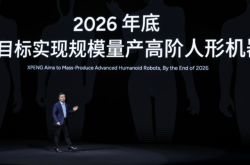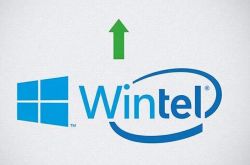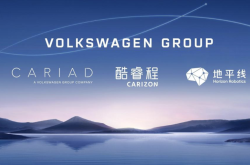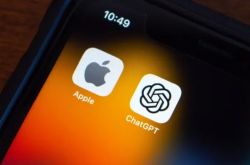DeepSeek-OCR: Large Model Technology Reaches a New Pivotal Point
![]() 11/06 2025
11/06 2025
![]() 344
344

Picture this: in an era where AI technology is surging forward like an unstoppable tidal wave, we suddenly uncover that a single, simple image can carry an astonishing amount of textual information with remarkable efficiency. This scenario is no longer confined to the realm of imagination; it's a tangible reality that has just come to light.
This week, DeepSeek has taken a significant step by open-sourcing a model named 'DeepSeek-OCR.' This innovative model introduces, for the first time, the concept of 'Context Optical Compression (COC),' accompanied by detailed technical insights and the foundational research paper.
While discussions in the market are still nascent, this development could quietly but profoundly mark a turning point in the evolution of AI. It compels us to ponder: Could images potentially reign supreme in the realm of information processing?
01
The Untapped Potential of Images: Why Images Could Outshine Text
Consider the myriad of documents, reports, and books we encounter daily. Traditionally, these are dissected into countless textual tokens, which accumulate like bricks to construct the model's 'wall of understanding.'
However, DeepSeek-OCR takes a novel approach. It perceives text as an image, employing visual encoding to compress entire pages into a mere handful of 'visual tokens' before decoding them back into text, tables, or even intricate charts.
The outcome? A staggering tenfold increase in efficiency coupled with a 97% accuracy rate.
This achievement transcends mere technical optimization; it's a bold attempt to demonstrate that images are not mere slaves to information but rather its efficient carriers.
Take, for instance, a 1,000-word article. Traditional methods might necessitate over a thousand tokens for processing, whereas DeepSeek-OCR requires only around 100 visual tokens to reconstruct the content with 97% fidelity. This implies that the model can effortlessly handle ultra-long documents without being constrained by computational resources.
02
Architecture and Operational Principles
The system design of DeepSeek-OCR resembles a finely tuned precision machine, divided into two distinct modules. A robust DeepEncoder captures the page information, while a lightweight text generator functions like a translator, converting visual tokens into readable output.
The encoder ingeniously combines SAM's local analysis capabilities with CLIP's global understanding. Subsequently, it employs a 16x compressor to reduce the initial 4,096 tokens to a mere 256. This represents the core secret behind its remarkable efficiency.
More cleverly still, the system automatically adjusts based on the complexity of the document. Simple PowerPoint presentations require only 64 tokens, books and reports around 100, and dense newspapers up to 800.
In comparison, DeepSeek-OCR outperforms GOT-OCR 2.0 (which requires 256 tokens) and MinerU 2.0 (over 6,000 tokens per page), reducing token counts by a staggering 90%. The decoder utilizes a Mixture of Experts (MoE) architecture with approximately 3 billion parameters (expanding to about 5.7 billion when activated), capable of swiftly generating text, Markdown, or structured data.
In real-world tests, a single A100 GPU can process over 200,000 pages daily. Scaling up to 20 eight-card servers boosts the capacity to a staggering 33 million pages per day. This is not a mere laboratory experiment; it's an industrial-grade powerhouse.
03
A Profound Paradox: Why Are Images More 'Efficient'?
Herein lies a fascinating paradox: images contain far more raw data, yet in models, they can be expressed with fewer tokens. The answer lies in the concept of information density.
Textual tokens, while appearing concise on the surface, must internally expand into vectors with thousands of dimensions. In contrast, image tokens, akin to continuous scrolls, package information more compactly. It's reminiscent of human memory: recent events remain vivid, while distant memories fade but retain their essence.
DeepSeek-OCR has proven the feasibility of visual tokens. However, training purely vision-based foundation models remains a conundrum. Traditional large models achieved success with a clear objective—'predict the next word'—and straightforward evaluation metrics. For image-text prediction, the target is ambiguous: predicting the next image fragment? Evaluation becomes arduous; converting to text tokens merely reverts to traditional paths.
Thus, for the present, DeepSeek-OCR enhances existing systems rather than replacing them. We find ourselves at a crossroads: infinite possibilities lie ahead, but breakthroughs demand patience.
If this technology matures and scales, its ripple effects will be far-reaching:
Firstly, it will transform the 'token economy': long documents will no longer be constrained by context windows, and processing costs will plummet. Secondly, it will enhance information extraction: financial charts and technical drawings can be directly converted to structured data with precision and efficiency. Finally, it will boost flexibility: stable performance on suboptimal hardware will democratize AI access.
More ingeniously, it could potentially improve chatbots' long-context memory. Through a process termed 'visual decay': storing old conversations as low-resolution images mimics the natural fading of human memory, thereby expanding context without exploding token counts.
04
Conclusion
The significance of DeepSeek-OCR's exploration extends beyond its tenfold efficiency boost. It lies in how it redraws the boundaries of document processing, challenges context limitations, optimizes cost structures, and revolutionizes enterprise workflows.
While the dawn of purely vision-based training remains on the horizon, optical compression undoubtedly offers a promising new path toward the future.
Related FAQ Index:
Q: Why not train foundation models directly from text images?
A: Large models achieved success with a clear objective—'predict the next word'—and straightforward evaluation metrics. For text images, predicting the next image fragment is evaluation-intensive and slow; converting to text tokens merely reverts to traditional paths. DeepSeek opted to fine-tune existing models to decode visual representations without replacing token foundations.
Q: How does its speed compare to traditional OCR systems?
A: Processing a 3503×1668-pixel image takes 24 seconds for basic text extraction, 39 seconds for structured Markdown, and 58 seconds for full parsing with bounding boxes. Traditional OCR systems are faster, but at equal accuracy, they require thousands of tokens—e.g., MinerU 2.0 needs over 6,000 per page, while DeepSeek stays under 800.
Q: Can this technology improve chatbots' long-context memory?
A: Yes. Through 'visual decay': converting old conversations to low-resolution images mimics the natural fading of memory, thereby expanding context without increasing token consumption. This approach is suitable for long-term memory scenarios, although production implementation details remain to be elaborated.








